Studies show that Hybrid is here to Stay: Here are the Numbers
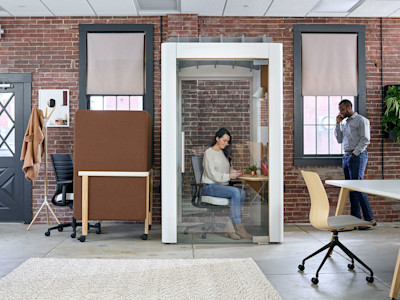
As major corporations grapple with the practical implications of the hybrid workplace, a growing realization is taking hold: the hybrid model could very well be here to stay. A recent Gallup report on the future of work expands on this concept. There are many adjustments to be made after the widespread resistance to embrace what appears to be the inevitable future of work. Organizations are facing the problem of trying to convince workers to spend time in the office, even if it’s minimal. Workplace design, amenities, and providing employees with the necessary tools to do their jobs are critical to the hybrid model. These elements help employees enjoy the space they’re leaving their homes for. While the workforce is grappling with the prospect of returning to work, some individuals are beginning to acknowledge that sacrificing their autonomy may be a trade-off they are willing to make to retain their employment. Other employees are making the decision to quit rather than return to the office. What’s the answer? The hybrid model is the perfect marriage if implemented correctly, and the numbers don’t lie.
A Gallup Report on the Future of Work
The events of 2020 caused a major setback. The crushing blow the pandemic had on the workforce, the commercial real estate market, and workplace trends have left employers with few choices, as indicated in the Gallup report. At the same time, employees are realizing they have more power than they have ever had. In May 2020, after a drastic drop in on-site and hybrid models, there was an unprecedented amount of remote workers. Out of remote capable workers, 70% of them embraced remote work. This was a 62-point spike in a matter of 16 months. We also saw on-site workers fall 48 points to only 12% working in-person. As you would expect, since then the numbers have corrected themselves. Although, this correction hasn’t taken us back to pre-pandemic levels. What we’re seeing, is quite the opposite. The hybrid and remote workers are still stifling on-site numbers and it doesn’t appear to be changing anytime soon. Although hybrid, remote, and on-site workers are starting to stabilize, the impact of the 2020 pandemic has left its mark on the future of work. From January 2019 to May of 2023 we saw the number of employees embracing hybrid work rise from 32% to 52% and fully remote rise from 8% to 29%. The on-site workforce dropped from 60% to 20%. and on-site work appears to be leveling out after a 40-point drop. For the foreseeable future, we aren’t seeing the numbers return to what we saw in 2019. Prior to the 2020 pandemic, the on-site model was understandably far more popular. So, what does this shifting landscape look like?
Hybrid and the Future
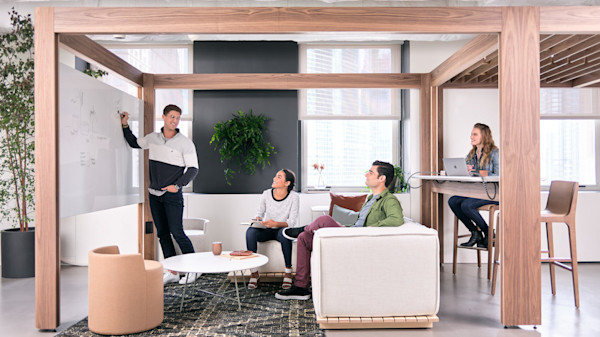
>>Find ways to transform your office into the perfect hybrid space.<<
Often, opinions about the hybrid model vary among companies and their employees. In-office work is necessary to adopt the hybrid model but the frequency and attendance policies vary depending on the company's needs and the scope of work. Does this mean employees should have a set schedule? Do they only need to come in on an as-needed basis? At the end of the day, it’s up to the company. From Q2 to Q3 there was a 6-point increase in the 3-day work week. The next largest increase was 1 point in the 2-day in-person model. Both the 1-day or less and the 4+ day on-site work week experienced a drop in use. This results in an average in-person work week of 2.6 days. There are concerns that employees working from home can lead to a decrease in productivity and efficiency, but 31% of managers recognize the benefits of off-site work and see the potential for an increase in productivity.
How Should You Get Employees to Return to Work?
There are many advantages to hybrid work but there are also some disadvantages. The Gallup report found the largest benefit for employees is the work-life balance. At the same time, the greatest disadvantage is the limited access they have to office resources. But how can you support a better work-life balance? Working remotely has given employees a taste of their ideal work-life balance. For some workers, this means they have the opportunity to go for a walk during the day, take an afternoon nap, or spend more time around their family. For others, this means a working environment that suits their needs through aesthetics and functionality. Although employees are still able to experience this with the hybrid model, being in the office limits their ability to do so as frequently. That’s why creating an office environment that supports a work-life balance is important to employees and a company’s success. Here are 3 ways you can build an office that employees want to be in:
1. Modern office furniture
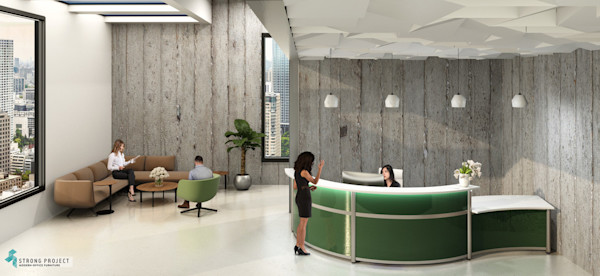
>>Discover how our modern furniture can introduce stunning aesthetics to your hybrid office.<<
Aesthetics play a huge part in the mood, morale, and productivity of employees. Vibrant colors, furniture with modern elements, and ergonomics help create an environment that employees will enjoy. The clean lines and sweeping curves of our modern furniture can give employees a work experience they are unable to replicate remotely. Having a location to go to that is incomparable to anything they can provide themselves with can easily be achieved with our modern cubicles, lounge seating, and collaborative spaces they are unable to find anywhere else.
2. Automation
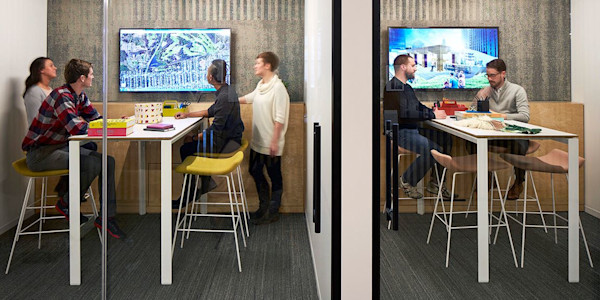
>>Our furniture can blend in seamlessly with an AI workplace.<<
With the introduction of AI in the workplace, employees are able to remove mundane and repetitive tasks easily to avoid wasting valuable working hours and energy. This automation is something employees more than likely don’t have access to remotely. Being able to help employees do their jobs easier while in the office is one way to encourage them to work in person.
3. Work-life Balance
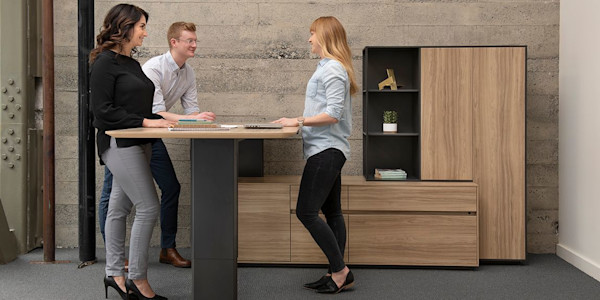
>>Our modern standing desks can introduce self-care and employee well-being into the workplace.<<
Replicating the work-life balance employees experience at home can be extremely difficult, if not impossible. However, there are ways to still give employees the balance they need. Having an area where employees can step away from their desks is crucial to reducing fatigue and burnout. Breakrooms, collaborative areas, and private acoustic pods help employees to socialize as well as have private areas to escape from their daily job duties.
It’s Time to Embrace It
The hybrid model is here to stay. Even though companies are struggling to come to terms with it, they’re are ways to embrace it. Hybrid looks different to each company and it means something different to each employee. A successful hybrid model relies on meeting employees in the middle, creating an environment they want to work in, and the support they need to do their jobs. Whatever the hybrid model looks like to a company, the numbers show that it’s here to stay. Interested in learning more about designing a hybrid office? Check out our comprehensive guide! All data used was retrieved from an October 9th, 2023 Gallup Report.



